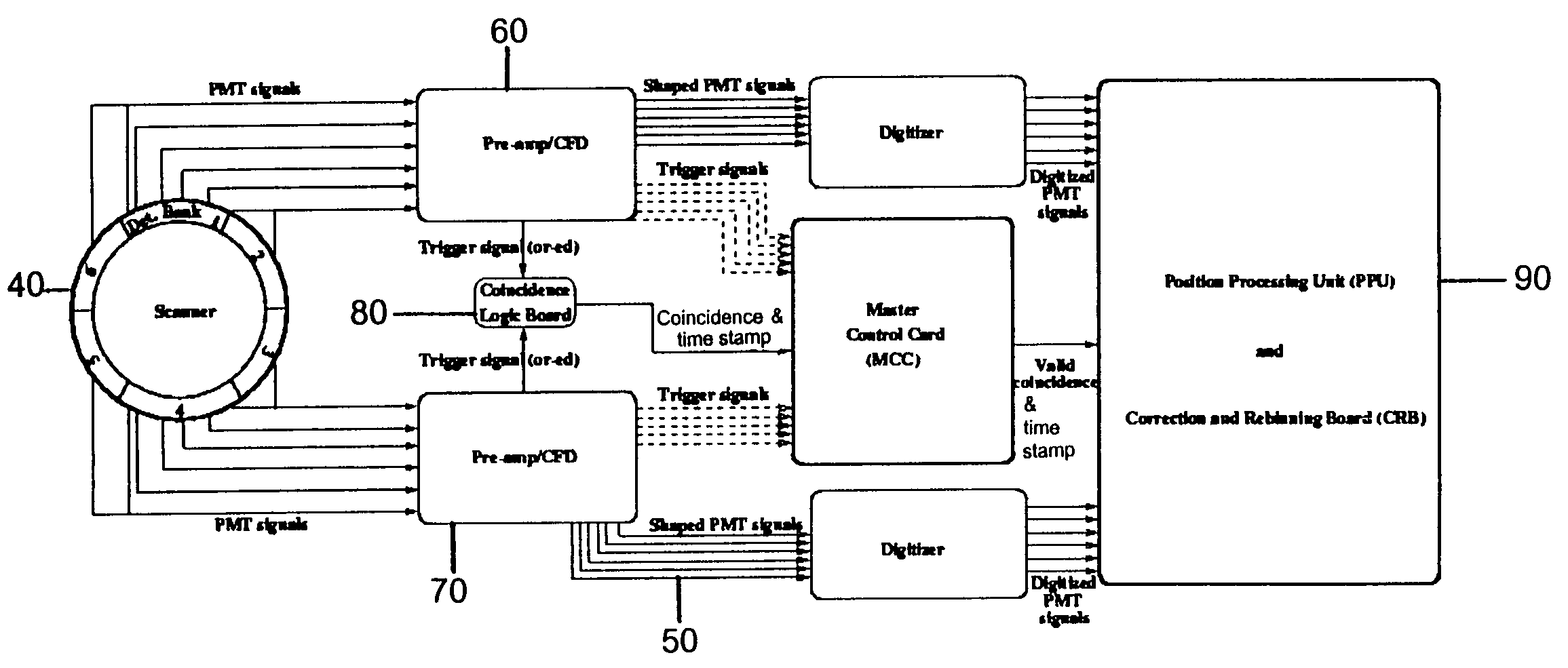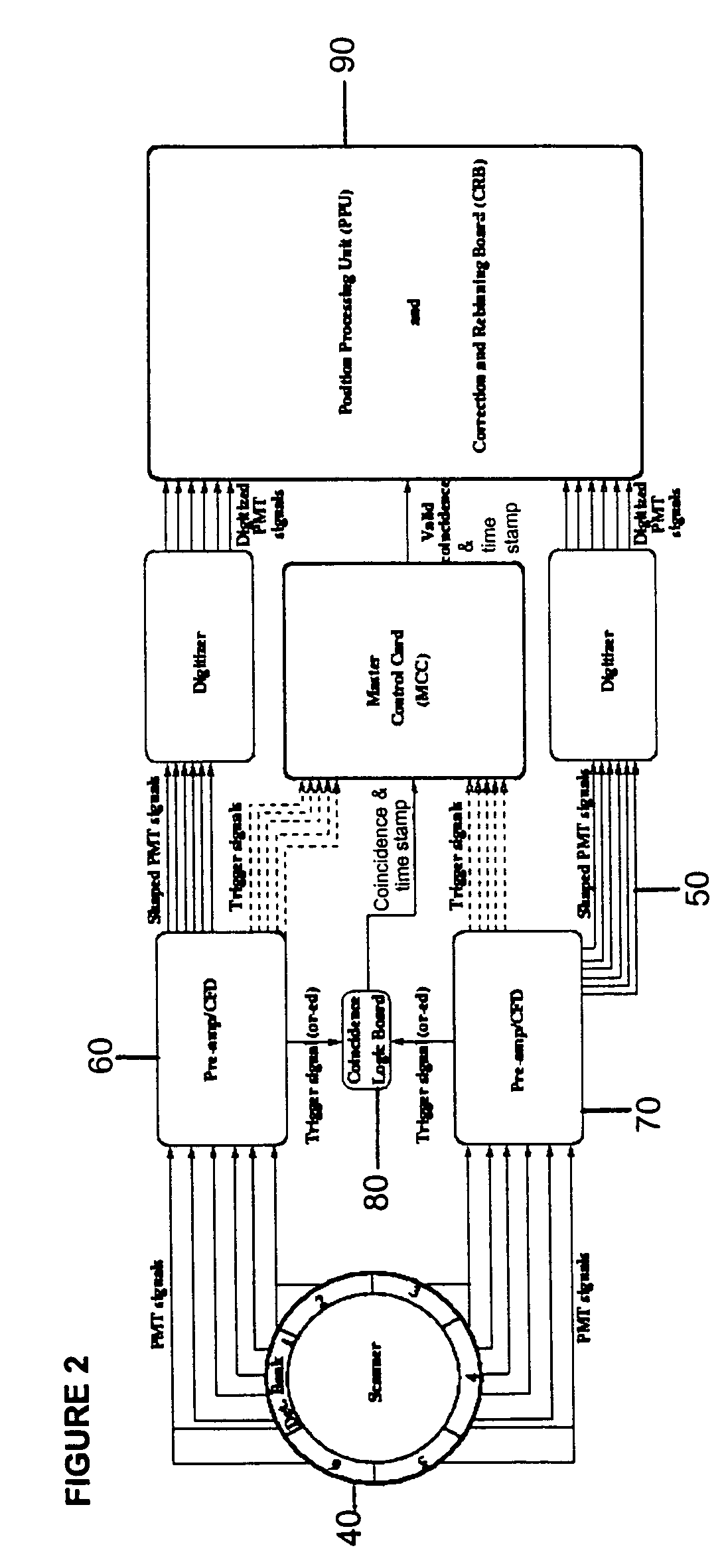Lanthanum halide scintillators for time-of-flight 3-D pet
a technology of lanthanum halide and scintillator, which is applied in the field of lanthanum halide scintillators, can solve the problems of limited performance that was achievable at that time, poor energy resolution, and low light output, and achieves fast decay, high light output, and high image quality.
- Summary
- Abstract
- Description
- Claims
- Application Information
AI Technical Summary
Benefits of technology
Problems solved by technology
Method used
Image
Examples
Embodiment Construction
[0028]The present invention relates to the development of a detector using Lanthanum Halide scintillators (for example LaCl3 or LaBr3) that will be applied to a 3D PET scanner with TOF capability. The resulting detector must have good sensitivity, good spatial resolution, good energy resolution, and good timing resolution. The good sensitivity is achieved by using thick crystals, e.g., about 30-mm thick, so that the efficiency for stopping 511 keV gamma rays is high. High sensitivity leads to more counts and / or shorter imaging time for a PET scanner. The good spatial resolution is achieved by using crystals with a small cross section, e.g., 4-mm by 4-mm. Good detector spatial resolution leads to high contrast and good definition of small structures in the image. The good energy resolution is achieved by using a scintillator with high light output, and both of the Lanthanum Halide scintillators have the highest light output of any known inorganic scintillator. Compared to NaI(T1) (th...
PUM
 Login to View More
Login to View More Abstract
Description
Claims
Application Information
 Login to View More
Login to View More - R&D
- Intellectual Property
- Life Sciences
- Materials
- Tech Scout
- Unparalleled Data Quality
- Higher Quality Content
- 60% Fewer Hallucinations
Browse by: Latest US Patents, China's latest patents, Technical Efficacy Thesaurus, Application Domain, Technology Topic, Popular Technical Reports.
© 2025 PatSnap. All rights reserved.Legal|Privacy policy|Modern Slavery Act Transparency Statement|Sitemap|About US| Contact US: help@patsnap.com



